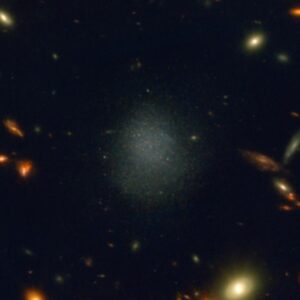
The more we look out at the universe, the more we’re going to prove and disprove theories and find things that just plain were never expected.
Case in point: while observing a cluster of galaxies as part of a JWST survey, researchers spotted a relatively nearby dwarf spheroidal galaxy peering back at them. This low-mass system is only about 98 million light years away. It is so near and so diffuse that we can make out individual stars throughout the system.
This work is published in The Astrophysical Journal Letters and led by Tim Carleton.
We had thought dwarf galaxies consistently existed in the outskirts of more massive galaxies and orbiting within galaxy clusters. We had not thought they’d sometimes be hanging out alone.
And now we know that sometimes galaxies just sneak off to be by themselves. How does that happen? That’s a future paper.
